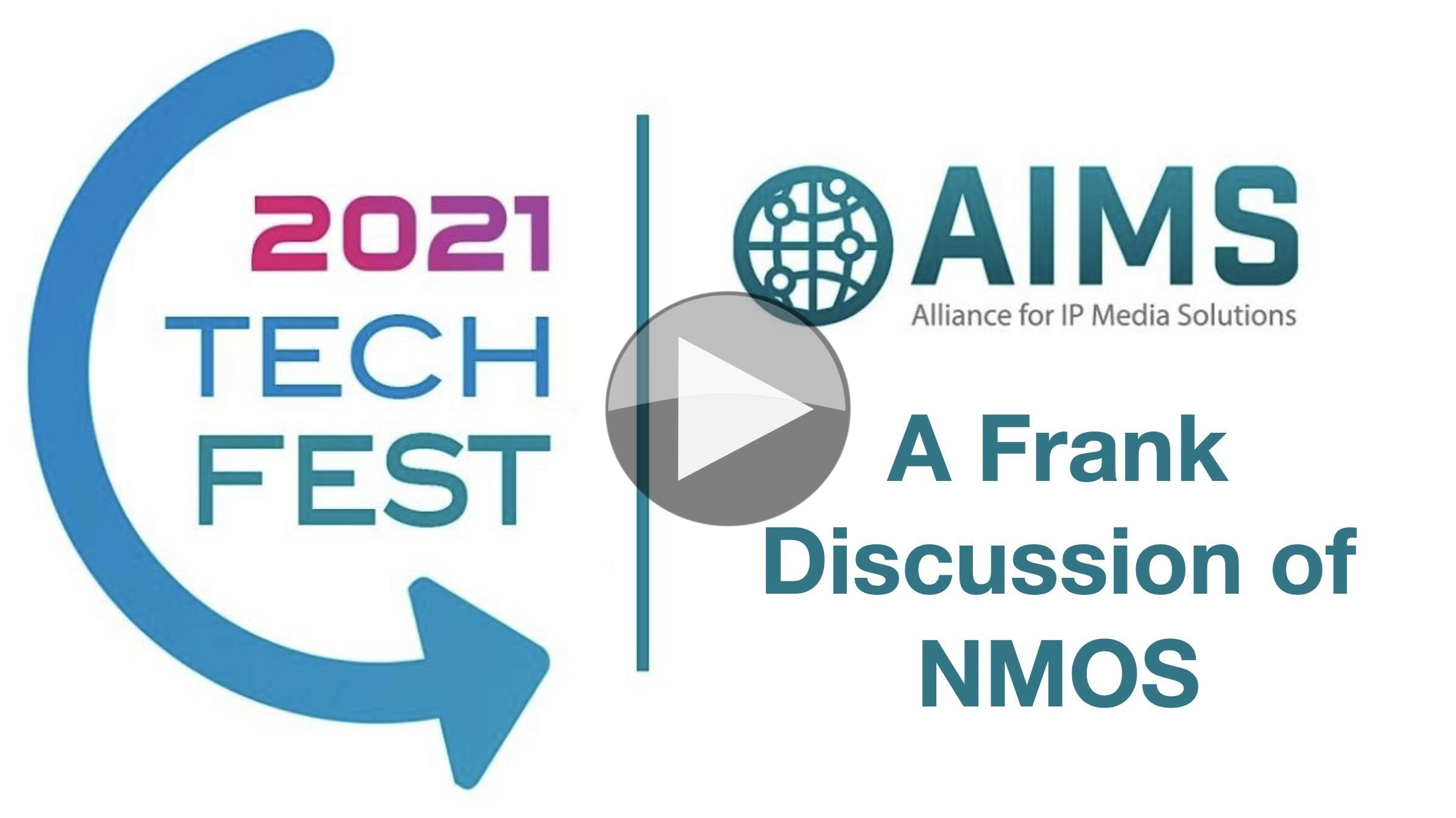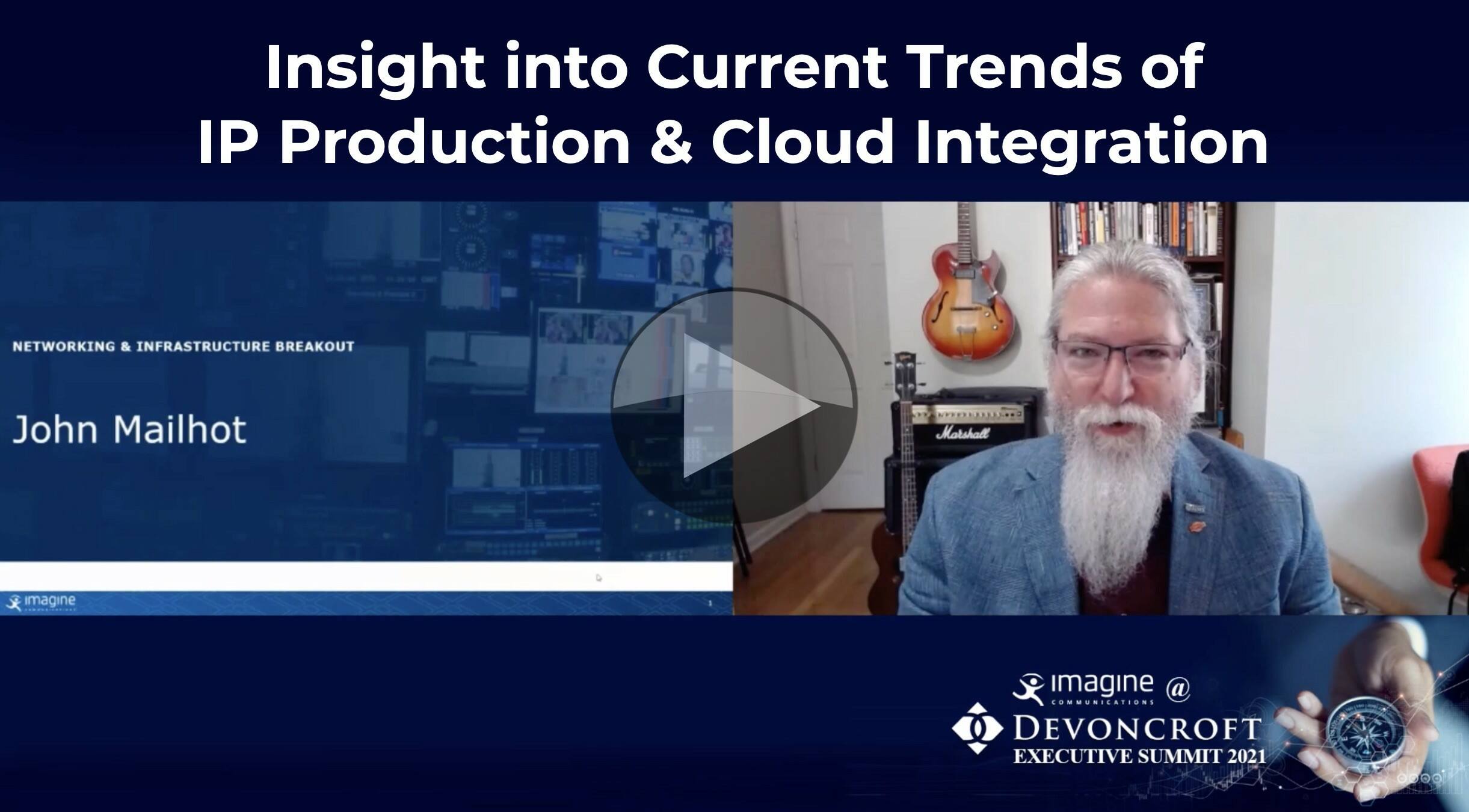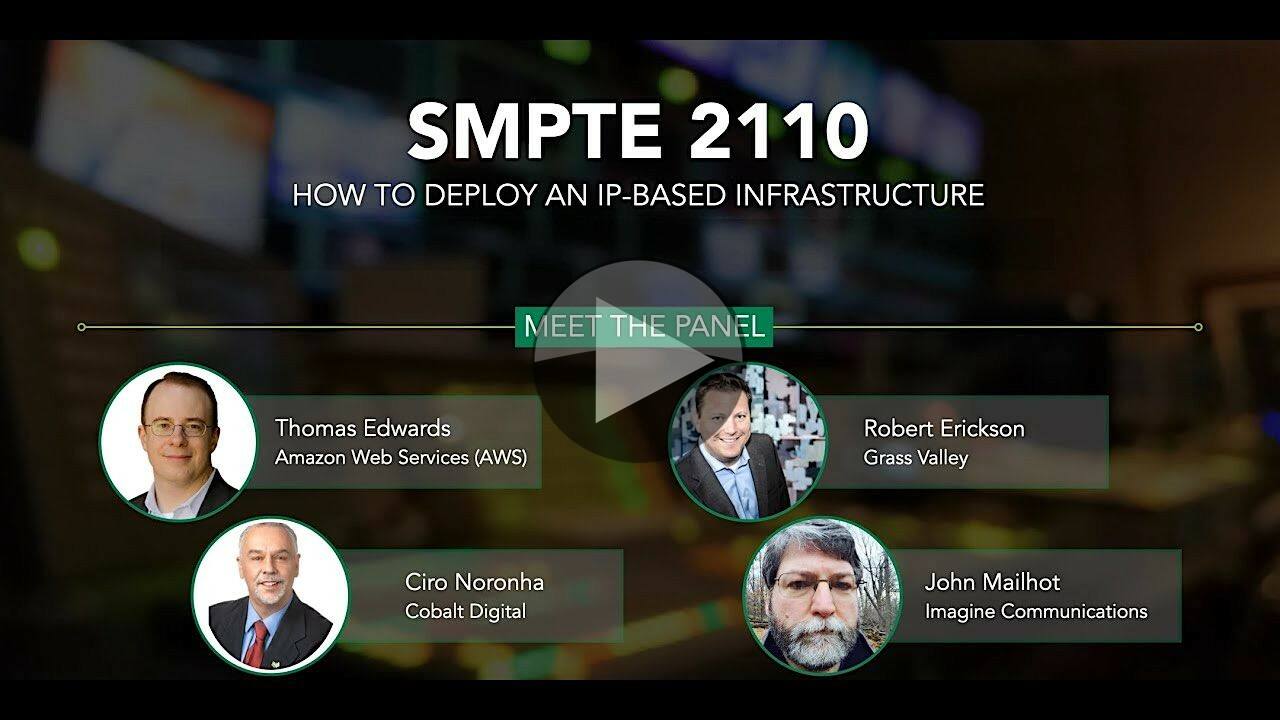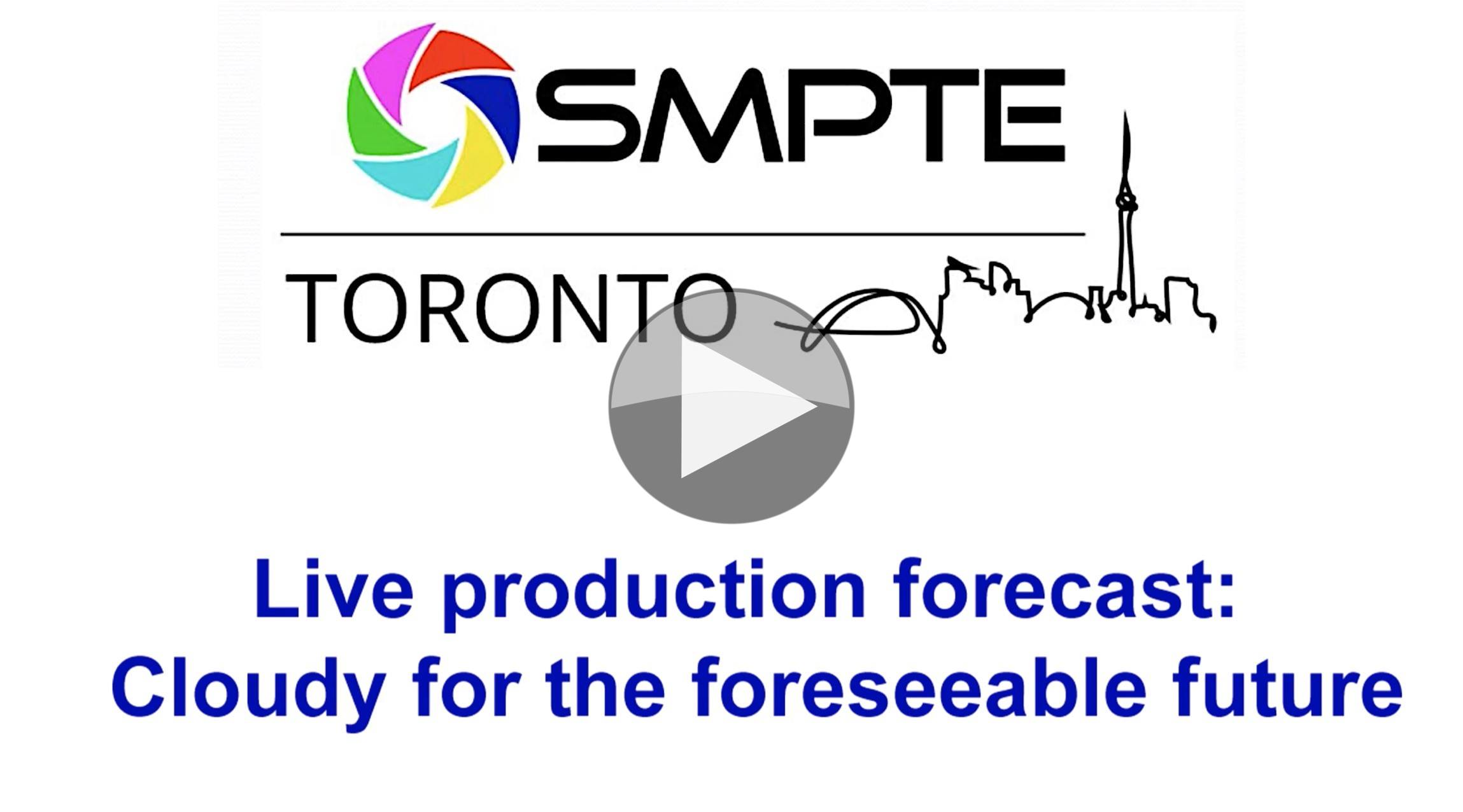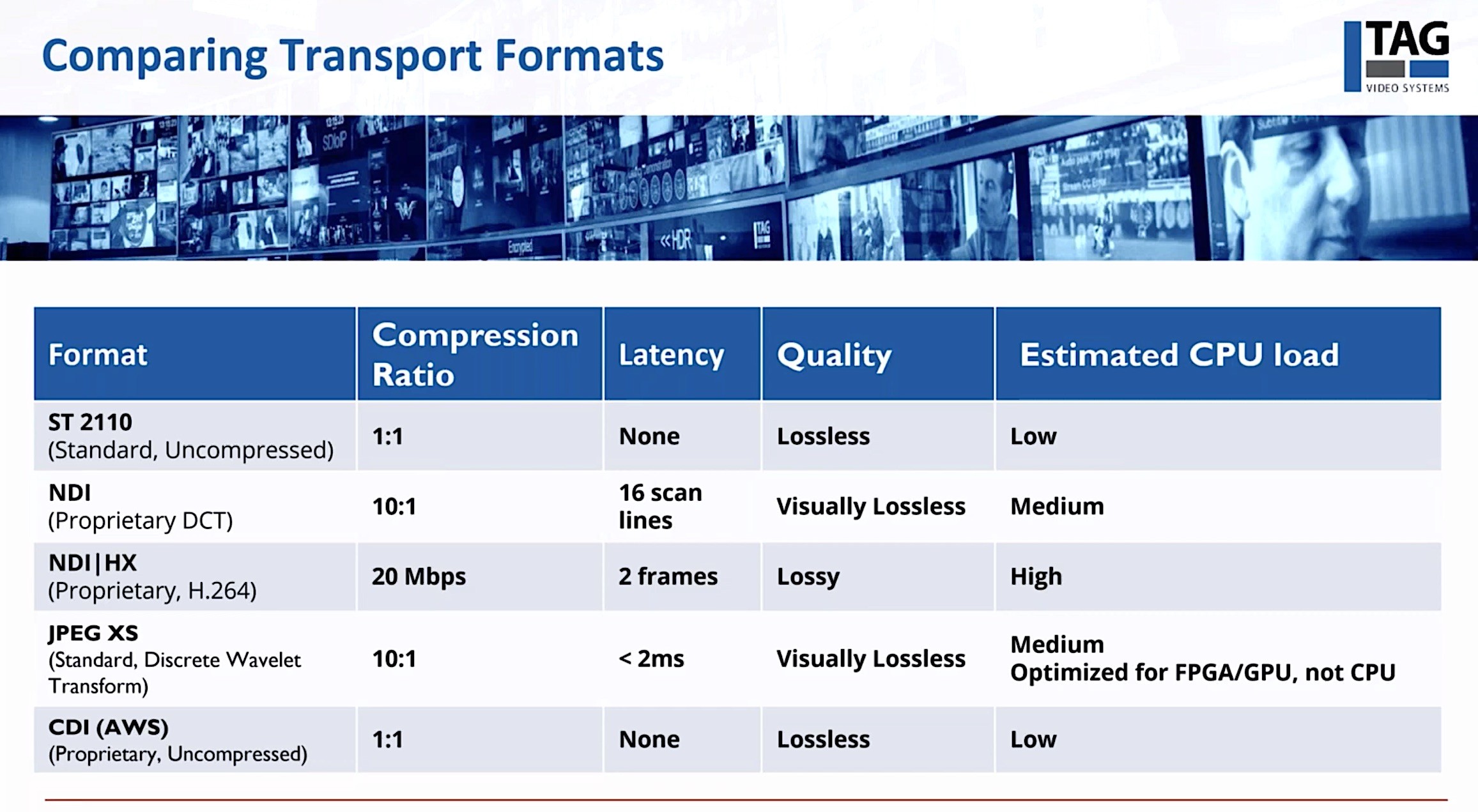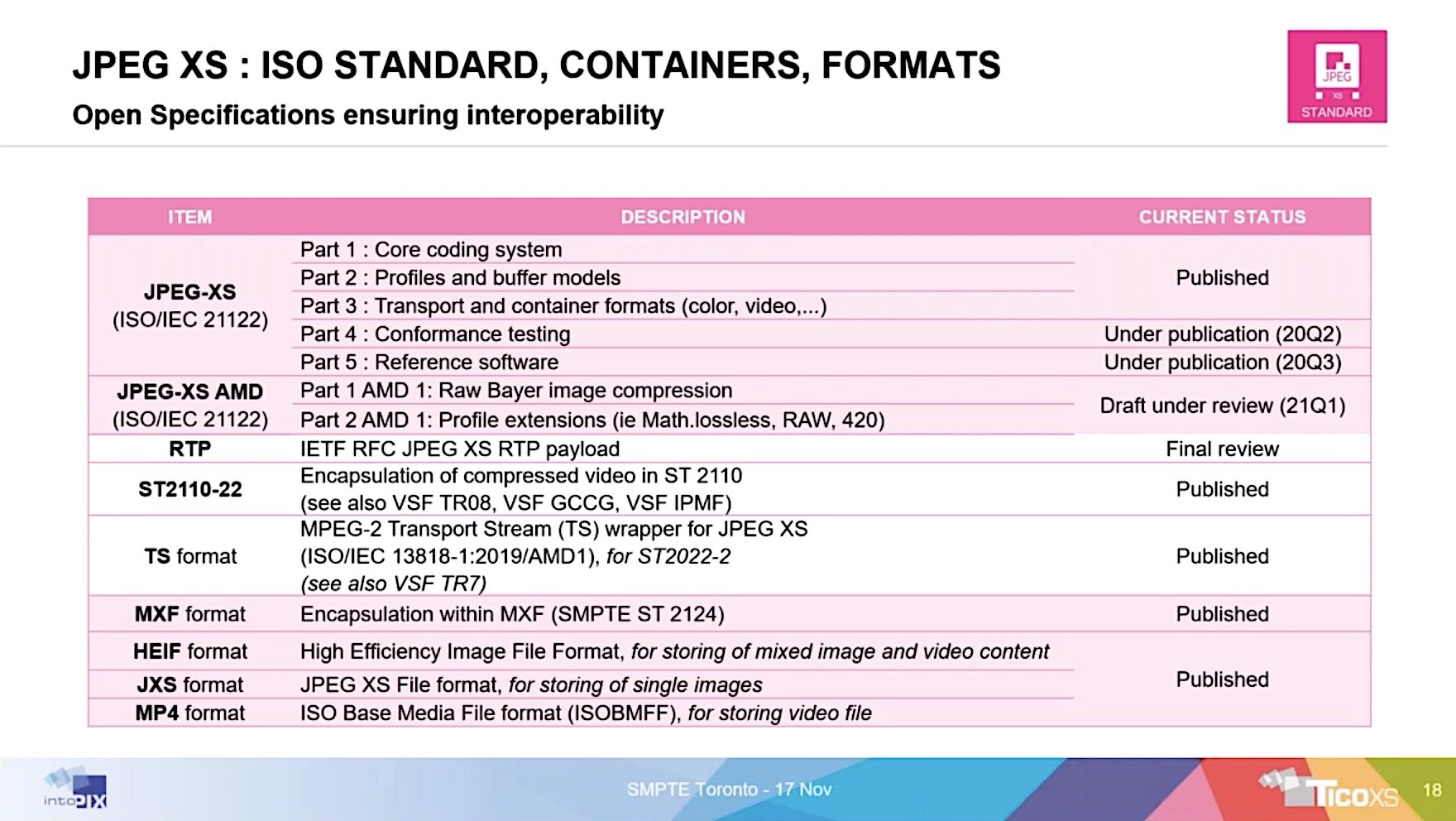What NMOS isn’t is almost as important as what NMOS actually is when it comes to defining a new project implementing SMPTE ST 2110. Written by AMWA, NMOS is a suite of open specifications which help control media flow hence the name: Network Media Open Specifications. Typically NMOS specifications are used alongside the ST 2110 standards but in this hype-free panel, we hear that 2110 isn’t the only application of NMOS.
AMWA Executive Director Brad Gilmer introduces this ‘frank’ panel with Imagine’s John Mailhot explaining the two meanings ‘NMOS’ has. The first is the name of the project we have just introduced in this article. The second is as shorthand for the two best-known specifications created by the project, IS-04 and IS-05. Together, these allow new devices to register their availability to the rest of the system and to receive instructions regarding sending media streams. There are plenty of other specifications which are explained in this talk of which two more are mentioned later in this video: IS-08 which manages audio channel mapping and IS-09 which allows new devices to get a global configuration to automatically find out facts like their PTP domain.
Security is “important and missing previously,” says Jed Deame from Nextera but explains that since NMOS is predominantly a specification for HTTP API calls, there is nothing to stop this from happening as HTTPS or another protocol as long as it provides both encryption and authorisation. The panel then explores the limits of the scope of NMOS. For security, its scope is to secure the NMOS control traffic, so doesn’t stretch to securing the media transport or, say, PTP. Furthermore, for NMOS as a whole, it’s important to remember it defines control and not more than control. Brad says, though, that even this scope is ambiguous as where does the concept of ‘control’ stop? Is a business management system control? What about scheduling of media? Triggering playback? There have to be limited.
Imagine Communications’ John Mailhot explores the idea of control asking how much automation, and hence NMOS-style control, can help realise one of the promises of IP which is to reduces costs by speeding up system changes. Previously, Brad and John explain, changing a studio from doing NFL to doing NHL may take up to a month of rewiring and reprogramming. Now that rewiring can be done in software, John contends that the main task is to make sure the NMOS is fully-fledged enough to allow interoperable enumeration, configuration and programming of links within the system. The current specifications are being reinforced by ‘modelling’ work whereby the internal logical blocks of equipment, say an RGB gain control, can be advertised to the network as a whole rather than simply advertising a single ‘black box’ like an encoder. Now it’s possible to explain what pre and post-processing is available.
Another important topic explored by NVIDIA’s Richard Hastie and Jeremy Nightingale from Macnica, is the use of NMOS specifications outside of ST 2110 installations. Richard says that NVIDIA is using NMOS in over 200 different locations. He emphasises its use for media whether that be HEVC, AV1 or 2110. As such, he envisages it being used by ‘Twitch streamers’ no doubt with the help of the 2110-over-WAN work which is ongoing to find ways to expose NMOS information over public networks. Jeremy’s interest is in IPMX for ProAV where ‘plug and play’ as well as security are two of the main features being designed into the package.
Lastly, there’s a call out to the tools available. Since NMOS is an open specification project, the tools are released as Open Source which companies being encouraged to use the codebase in products or for testing. Not only is there a reference client, but Sony and BBC have released an NMOS testing tool and EasyNMOS provides a containerised implementation of IS-04 and IS-05 for extremely quick deployments of the toolset.
Watch now!
Speakers
 |
Brad Gilmer Executive Director, Video Services Forum Executive Director, Advanced Media Workflow Association (AMWA) |
 |
John Mailhot CTO Networking & Infrastructure |
 |
Jed Deame CEO, Nextera Video |
 |
Richard Hastie Senior Sales Director, NVIDIA |
 |
Jeremy Nightingale President Macnica Americas, Inc. |

